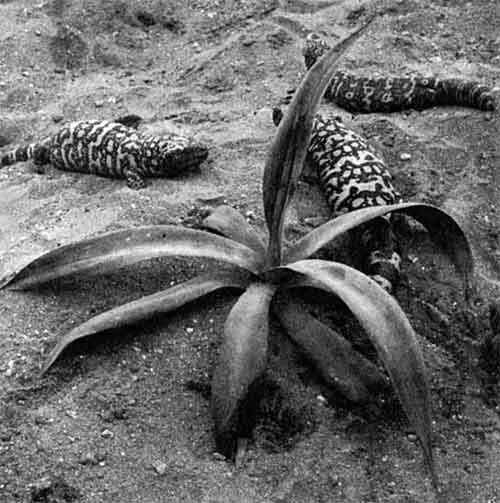|

Beads of Color: It is a heavy, slow moving lizard, up to 60 cm (2 feet) long. Its skin has the appearance of beads in the colors black, pink, orange, and yellow, laid down in intricate patterns.

A Venomous Bite: It was thought to be one of only two venomous lizards, but recent discoveries have shown that iguanas and monitor lizards also produce venom. Unlike snakes who use hollow teeth (fangs), the Gila monster injects venom into its victim through grooves in the teeth of its lower jaw. It produces only small quantities of its neurotoxic venom, which is secreted into the lizard's saliva. By chewing its prey, however, it tries to put as much of the poison into the bloodstream of its victim as possible.

Not Fatal: The Gila monster's bite is normally not fatal to humans (there are no reliable reports of fatalities), but it can bite quickly and holds on tenaciously.
What's on the Menu? The Gila monster's diet generally consists of small rodents, juvenile birds as well as eggs of both birds and reptiles. They have few natural predators of their own.

What's in a Name? The name "Gila monster" refers to the Gila River Basin in Arizona.
'Lizard Spit': In 2005 the Food and Drug Administration of the United States approved a drug for the management of Type 2 diabetes, Byetta (exenatide), a synthetic version of a protein derived from the Gila monster's saliva. The drug is sometimes referred to, with amusement, as 'lizard spit'.
Gilas in Danger: Gila monsters are a protected species under Arizona state law in the United States, and may not be collected, killed, or kept in captivity without a permit in that state. They are listed as a threatened species under the United States Federal Endangered Species Act, as well as in Mexico. They also appear in Appendix II of CITES, which puts restrictions on their export. The main threat to the species is human encroachment and habitat destruction.

All text is available under the terms
of the GNU Free Documentation License |